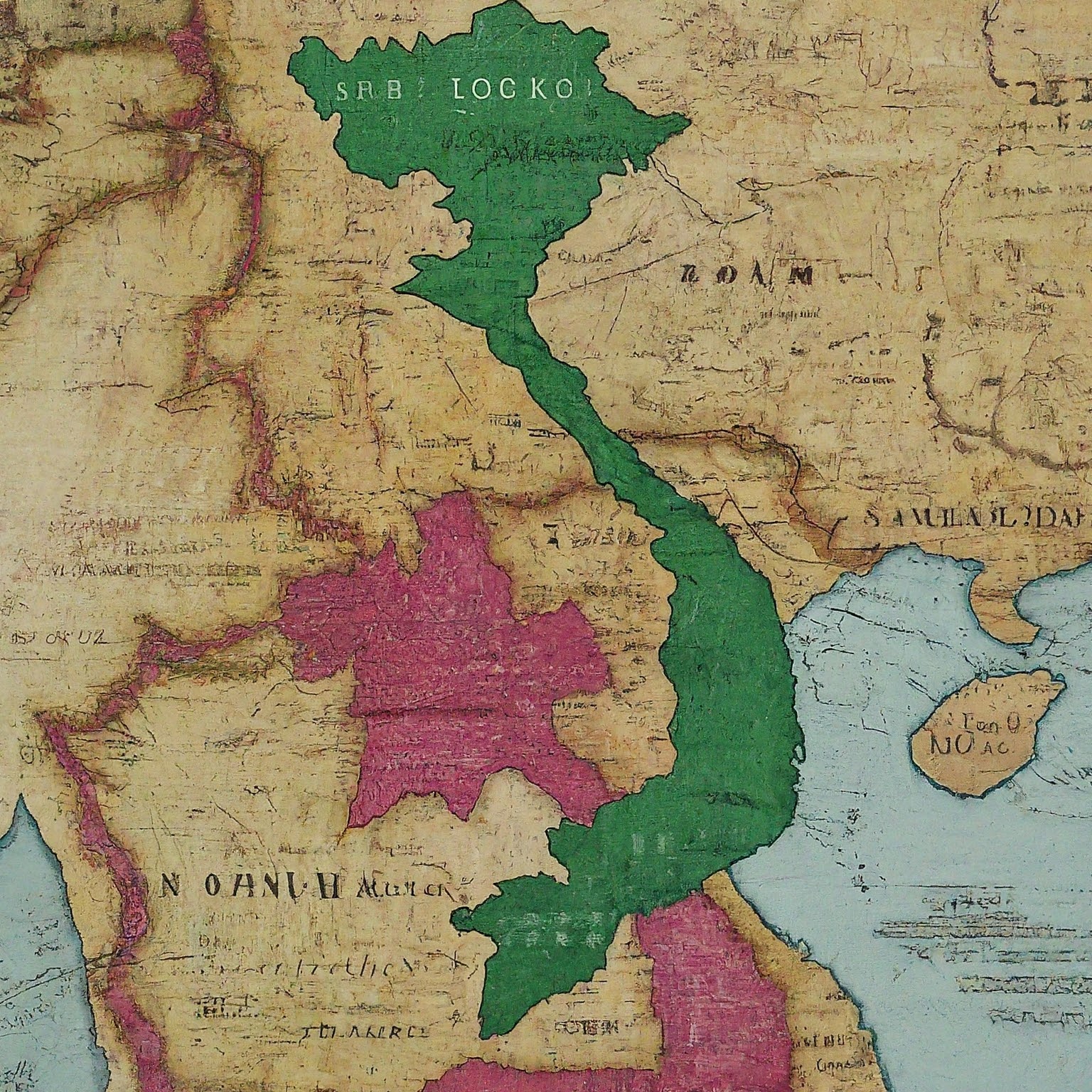In today’s globally interconnected world, country codes are the invisible threads that stitch together the fabric of communication. They serve as unique digital identifiers for each nation, facilitating seamless interactions in the realms of telecommunications, internet addressing, and international commerce. Among these codes, the Vietnam country code, represented by +84, holds a special significance. It acts as a gateway to the vibrant and dynamic country of Vietnam, unlocking its digital landscape and fostering cross-border connections. This exclusive article delves into the multifaceted world of the Vietnam country code, exploring its history, applications, implications, and its role in shaping Vietnam’s digital future.

The Essence of the Vietnam Country Code: A Digital Passport
The Vietnam country code, officially designated as +84, is more than just a numerical prefix. It embodies the essence of Vietnam’s digital identity, enabling seamless connectivity with the rest of the world. Whether you’re making an international call, browsing a Vietnamese website, or engaging in online transactions, the Vietnam country code plays a crucial role in facilitating these interactions.
Dialing an International Call to Vietnam: A Step-by-Step Guide
Dialing an international call to Vietnam may seem complex at first, but with the right knowledge, it becomes a straightforward process. Here’s a comprehensive guide to help you navigate the process:
- International Access Code/Exit Code: Every country has a unique international access code or exit code. It signals to your local telecom provider that you intend to make an international call. For most European countries, the exit code is 00, while in the US and Canada, it’s 011. Make sure you know the correct exit code for your country before proceeding.
- Vietnam Country Code: Once you’ve dialed the exit code, input the Vietnam country code, which is +84. This informs the global telecommunications network that the destination of your call is Vietnam.
- Area Code (if applicable): Vietnam employs area codes to distinguish different regions within the country. If you’re calling a landline, you’ll typically need to include the relevant area code. You can find area codes for various Vietnamese cities and provinces online or through your phone’s contact list.
- Local Phone Number: The final step is to dial the local phone number of the person or business you wish to contact. Landline numbers typically consist of 7 or 8 digits, while mobile numbers are 9 or 10 digits long. Double-check the number for accuracy to avoid misdials.
By combining these elements in the correct sequence – exit code + 84 (Vietnam country code) + area code (if applicable) + local phone number – you create the complete international dialing format to connect with anyone in Vietnam.
Understanding Area Codes in Vietnam
Vietnam’s telecommunication network is divided into various regions, each assigned a unique area code. These area codes are crucial for routing calls to the correct local exchange. Some key points to remember about area codes in Vietnam:
- Mobile phone numbers do not have separate area codes: They are usually 9 or 10 digits long and are easily distinguishable from landline numbers.
- Area codes can change: Due to population growth and network expansion, area codes in Vietnam may change periodically. It’s essential to stay updated with the latest information to avoid any dialing errors.
- Some areas have multiple area codes: In certain regions, multiple area codes may serve the same geographical area due to network overlays or historical reasons.
Additional Tips for Calling Vietnam
- Mind the Time Difference: Vietnam is in the Indochina Time zone (ICT), which is seven hours ahead of Coordinated Universal Time (UTC+7). Be mindful of the time difference between your location and Vietnam to avoid calling at inconvenient hours.
- Consider Alternative Calling Options: Traditional international calls can be expensive. Explore cost-effective alternatives such as VoIP (Voice over Internet Protocol) services, calling cards, or mobile apps that offer affordable international calling rates.
- Language Barriers: While Vietnamese is the official language of Vietnam, English is increasingly spoken, especially in tourist areas and business settings. However, it’s always courteous to be prepared for potential language barriers. Consider learning a few basic phrases in Vietnamese or utilizing translation apps to facilitate communication if needed.
- Cellular Coverage: Vietnam has good cellular coverage in most urban areas and popular tourist destinations. However, coverage may be limited in remote areas or mountainous regions. Consider purchasing a local SIM card or utilizing Wi-Fi calling if you plan to travel extensively within the country.
Troubleshooting Common Issues
Even with careful planning, you might encounter some challenges when making international calls to Vietnam. Here are a few common issues and their potential solutions:
- Call not connecting: Double-check the entire dialing sequence, ensuring accuracy in the exit code, Vietnam country code, area code (if applicable), and local phone number. If the issue persists, contact your telecom provider for assistance.
- Poor call quality: Try calling from a different location with a stronger network signal or consider using a VoIP service for enhanced clarity.
- High charges: Review your phone plan’s international calling rates and explore cost-effective alternatives, such as VoIP services or prepaid calling cards.
Beyond Phone Calls: Vietnam Country Code in the Digital World
The significance of the Vietnam country code extends beyond its primary function in international dialing. It plays a crucial role in various online activities and digital interactions.
- Domain Names: The “.vn” country code top-level domain (ccTLD) is specifically designated for entities within Vietnam. It serves as a distinct identifier for websites and online businesses based in the country, fostering trust and credibility among local users.
- E-commerce and Shipping: When purchasing goods or services from Vietnamese online retailers, the Vietnam country code is often required for address verification and shipping purposes. It helps ensure accurate delivery and facilitates customs clearance for international shipments.
- Online Forms and Registrations: Many online forms and registration processes require users to specify their country of residence. Selecting Vietnam from the dropdown list or manually entering the Vietnam country code helps websites and applications tailor their services and content to the user’s location.
Vietnam Country Code: A Symbol of Growth and Connectivity
Beyond its functional applications, the Vietnam country code also carries a symbolic weight, representing Vietnam’s rapid growth and increasing integration into the global community. In recent years, Vietnam has experienced significant economic development and technological advancements, positioning itself as a rising star in Southeast Asia. The Vietnam country code serves as a digital emblem of this progress, inviting the world to connect with the country’s vibrant culture, rich history, and promising future.
Embracing the Future of Communication in Vietnam
As technology continues to advance at an unprecedented pace, the landscape of communication in Vietnam is also evolving. The country is investing heavily in expanding its broadband infrastructure, promoting digital literacy, and fostering innovation in the tech sector.
The Vietnam country code will continue to play a crucial role in facilitating communication and connectivity, both within the country and with the rest of the world. As Vietnam embraces the future, its country code will serve as a digital gateway, inviting the world to experience its unique charm and contribute to its ongoing growth story.
Conclusion
The Vietnam country code, represented by +84, is more than just a numerical prefix. It is the key to unlocking communication with this dynamic Southeast Asian nation, facilitating seamless connections with individuals and businesses across Vietnam. By understanding its structure, following the proper dialing sequence, and considering the additional tips and cultural insights provided in this article, you can confidently reach out to anyone in Vietnam and experience the warmth and hospitality of its people.


